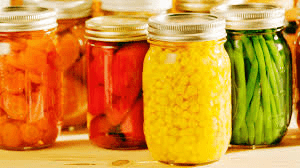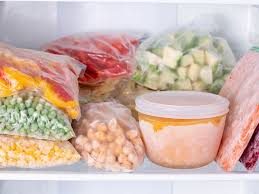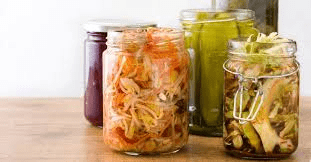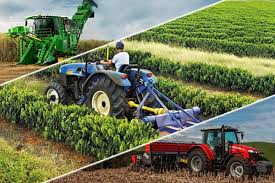Agricultural product transformation involves converting raw crops and other agricultural products into processed goods that are easier to store, use, and consume. This process is essential for extending the shelf life, enhancing the nutritional value, and improving the flavor of food products.
Understanding different methods of transformation helps farmers, producers, and consumers make informed choices about food preservation and preparation. This guide explores key methods of agricultural product transformation, including milling, canning, freezing, and fermentation.
Milling: Turning Raw Crops into Processed Ingredients
Milling is a process that turns raw grains and seeds into processed ingredients used in various food products. This method is crucial for producing flour, meal, and other grain-based products.
1. Process Overview: Milling involves grinding raw grains, such as wheat, corn, or rice, into finer particles. The process usually includes cleaning the grains, removing outer husks or shells, and grinding the kernels into flour or meal. Modern milling often uses machines like roller mills or hammer mills to achieve the desired texture.
2. Types of Milling: There are several types of milling processes, including dry milling and wet milling. Dry milling is used for grains like wheat and corn, producing flour or meal. Wet milling is used for products like corn syrup and starch, where grains are soaked and then processed to separate components.
3. Applications: Milled products are used in baking, cooking, and food manufacturing. Flour is a staple in bread, pasta, and pastries, while cornmeal is used in cornbread and tortillas. Milling enhances the usability of grains by converting them into versatile ingredients.
Canning: Preserving Freshness and Flavor

Canning is a method of preserving food by sealing it in airtight containers and heating it to kill bacteria and other microorganisms. This process helps maintain the food’s freshness and flavor over extended periods.
1. Process Overview: Canning involves placing food in jars or cans, sealing them with lids, and then heating them to destroy harmful bacteria and enzymes. The heat also creates a vacuum seal that prevents new bacteria from entering. This process can be done using water bath canning for high-acid foods (like tomatoes) or pressure canning for low-acid foods (like beans).
2. Types of Canning: There are two main types of canning: home canning and commercial canning. Home canning is done in small batches using basic equipment, while commercial canning involves large-scale operations with specialized machinery.
3. Applications: Canned foods include fruits, vegetables, sauces, soups, and meats. Canning allows for long-term storage and provides convenience, making it easier to enjoy seasonal produce throughout the year.
Read Also: Apple Maggot: Description, Damages Caused, Control and Preventive Measures
Freezing: Extending Shelf Life and Nutritional Value

Freezing is a method of preserving food by lowering its temperature to below freezing point, which stops the growth of microorganisms and slows down enzyme activity.
1. Process Overview: Freezing involves cooling food rapidly to temperatures of -18°C (0°F) or lower. The food is first prepped by washing, cutting, and sometimes blanching (briefly boiling) to preserve texture and color. It is then placed in freezer-safe containers or bags and stored in a freezer.
2. Types of Freezing: There are various freezing methods, including flash freezing (rapidly freezing food to minimize ice crystals), and traditional freezing (slower process). Flash freezing helps maintain the quality of the food by reducing ice crystal formation that can damage cell structure.
3. Applications: Frozen foods include vegetables, fruits, meats, and prepared meals. Freezing preserves the nutritional value and flavor of food while extending its shelf life. It also provides convenience by allowing for easy storage and quick meal preparation.
Read Also: 17 Medicinal Health Benefits Of Lotus Seed (Nelumbo nucifera)
Fermentation: Enhancing Flavor and Nutritional Benefits

Fermentation is a process that uses microorganisms like bacteria, yeast, or molds to convert sugars and other substances in food into acids, gases, or alcohol. This process can enhance flavor, texture, and nutritional value.
1. Process Overview: Fermentation involves the growth of beneficial microorganisms in food under controlled conditions. These microorganisms break down sugars and other compounds, producing acids or alcohol and changing the food’s flavor and texture. Examples of fermented foods include yogurt, sauerkraut, and kimchi.
2. Types of Fermentation: There are several types of fermentation, including lactic acid fermentation (used in pickles and yogurt), alcoholic fermentation (used in beer and wine), and acetic acid fermentation (used in vinegar production).
3. Applications: Fermented foods are valued for their unique flavors and potential health benefits, such as improved digestion and enhanced nutrient absorption. They are also used in culinary applications to add depth and complexity to dishes.
Comparing Processing Methods: Advantages and Disadvantages
Each processing method has its advantages and disadvantages, depending on factors like preservation goals, nutritional needs, and convenience.
1. Milling:
Advantages: Converts raw grains into versatile ingredients, enhances usability in baking and cooking.
Disadvantages: Can remove some of the grain’s natural nutrients, may require additional fortification.
2. Canning:
Advantages: Provides long-term storage, maintains food safety and flavor.
Disadvantages: Can lead to nutrient loss due to heat, requires proper sealing and equipment.
3. Freezing:
Advantages: Preserves nutritional value and flavor, extends shelf life, convenient for storage and meal prep.
Disadvantages: Requires freezer space, potential texture changes after thawing.
4. Fermentation:
Advantages: Enhances flavor and nutritional value, adds beneficial microorganisms.
Disadvantages: Requires careful control of conditions, may not be suitable for all types of food.
Conclusion: Choosing the Right Processing Method
Choosing the right processing method depends on your goals for preservation, nutrition, and convenience. Each method—milling, canning, freezing, and fermentation—offers unique benefits and can be used to achieve different objectives.
Milling is ideal for producing flour and meal from grains, making it a staple in baking and cooking.
Canning is best for preserving seasonal produce and maintaining freshness over long periods.
Freezing offers a convenient way to store a wide range of foods while retaining nutritional value.
Fermentation enhances flavor and adds nutritional benefits through the growth of beneficial microorganisms.
By understanding the advantages and disadvantages of each method, you can make informed choices that align with your needs and preferences. Proper selection and application of these processing methods ensure that agricultural products are preserved effectively, providing high-quality food for consumption use.
Read Also: Potato Farming Guide – 7 Tips to Grow Sacks Full of Potatoesand
Frequently Asked Questions
We will update this section soon.

